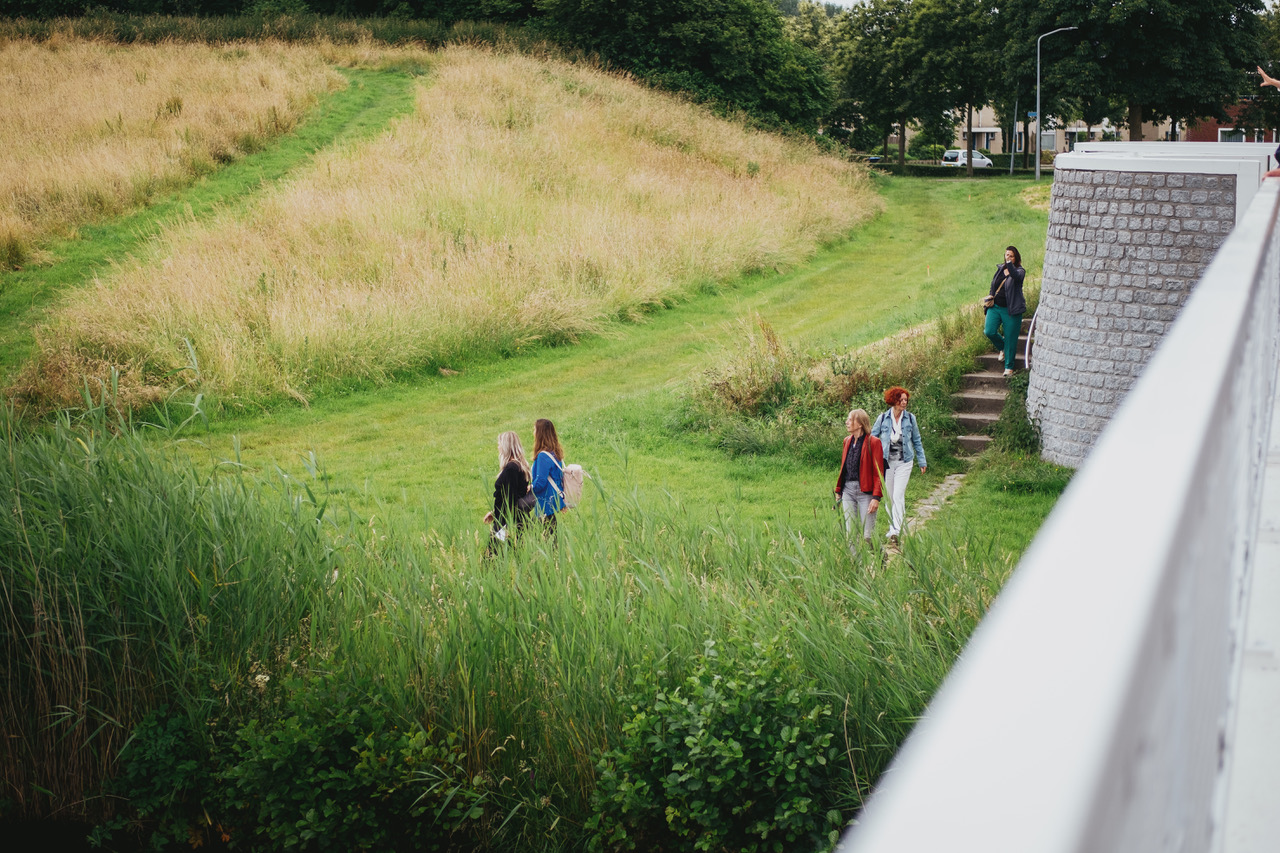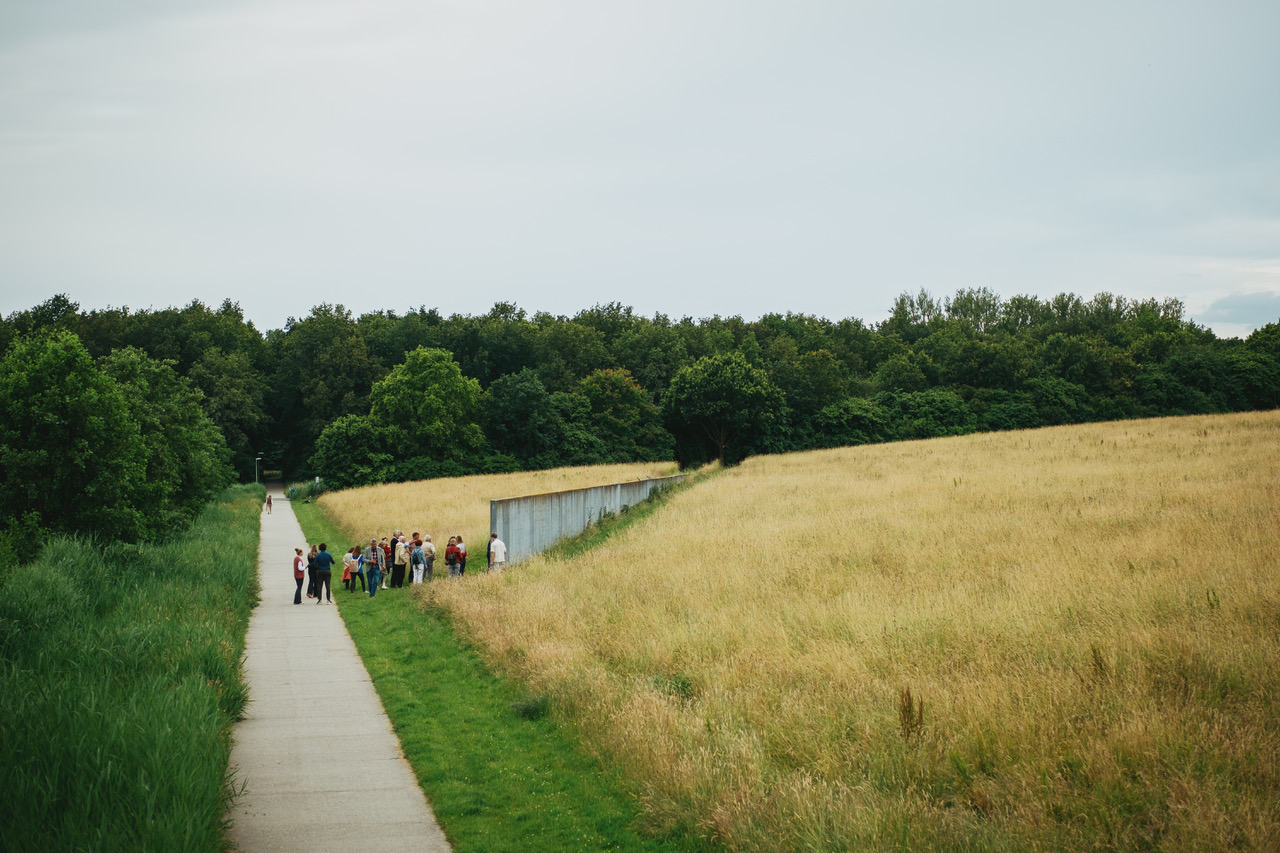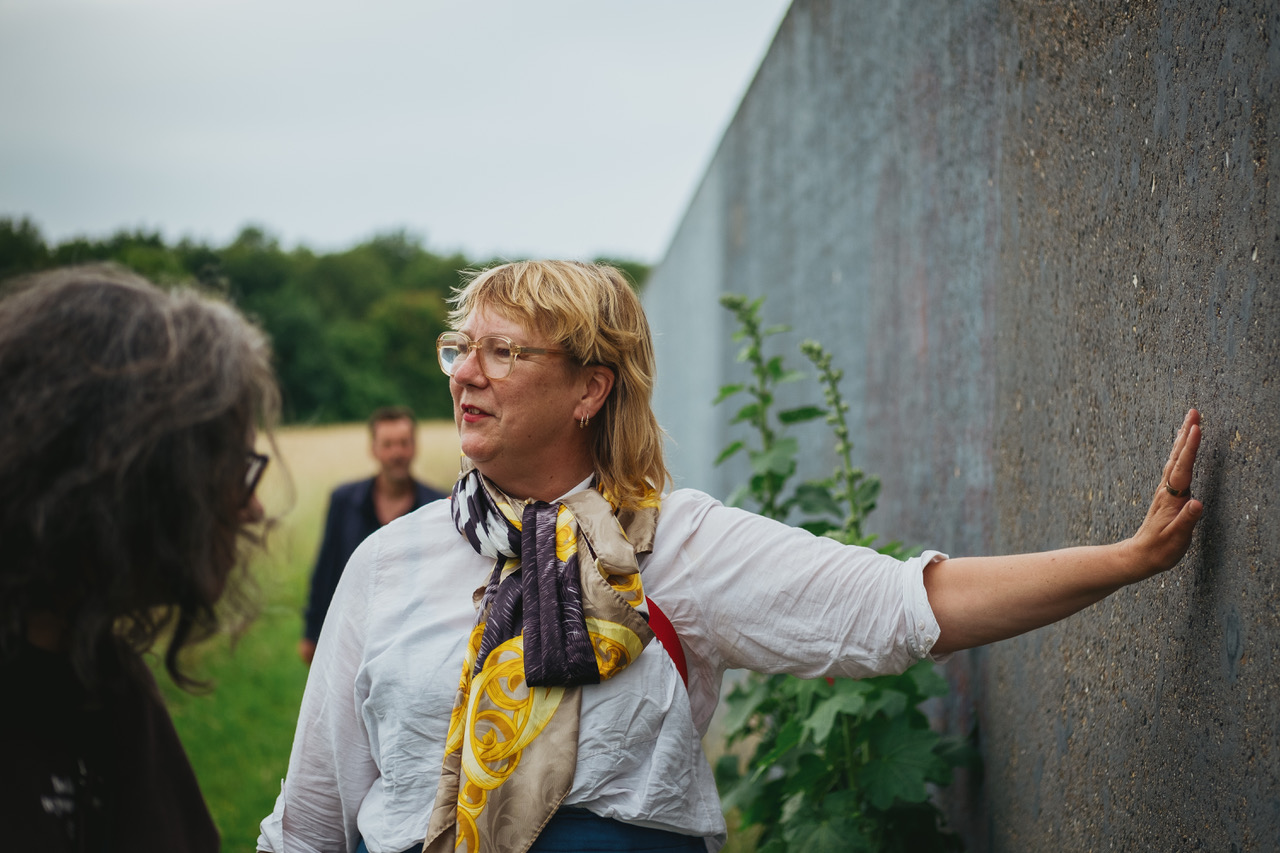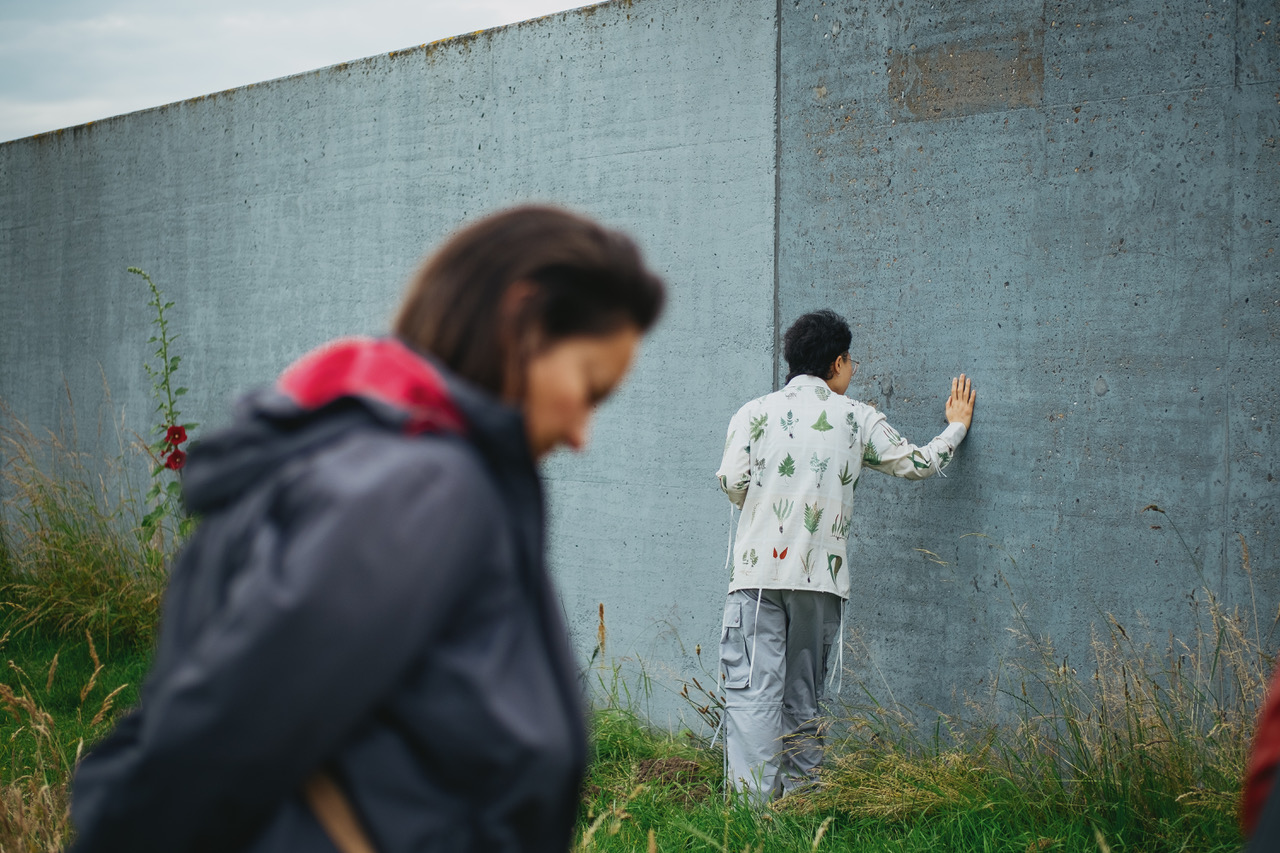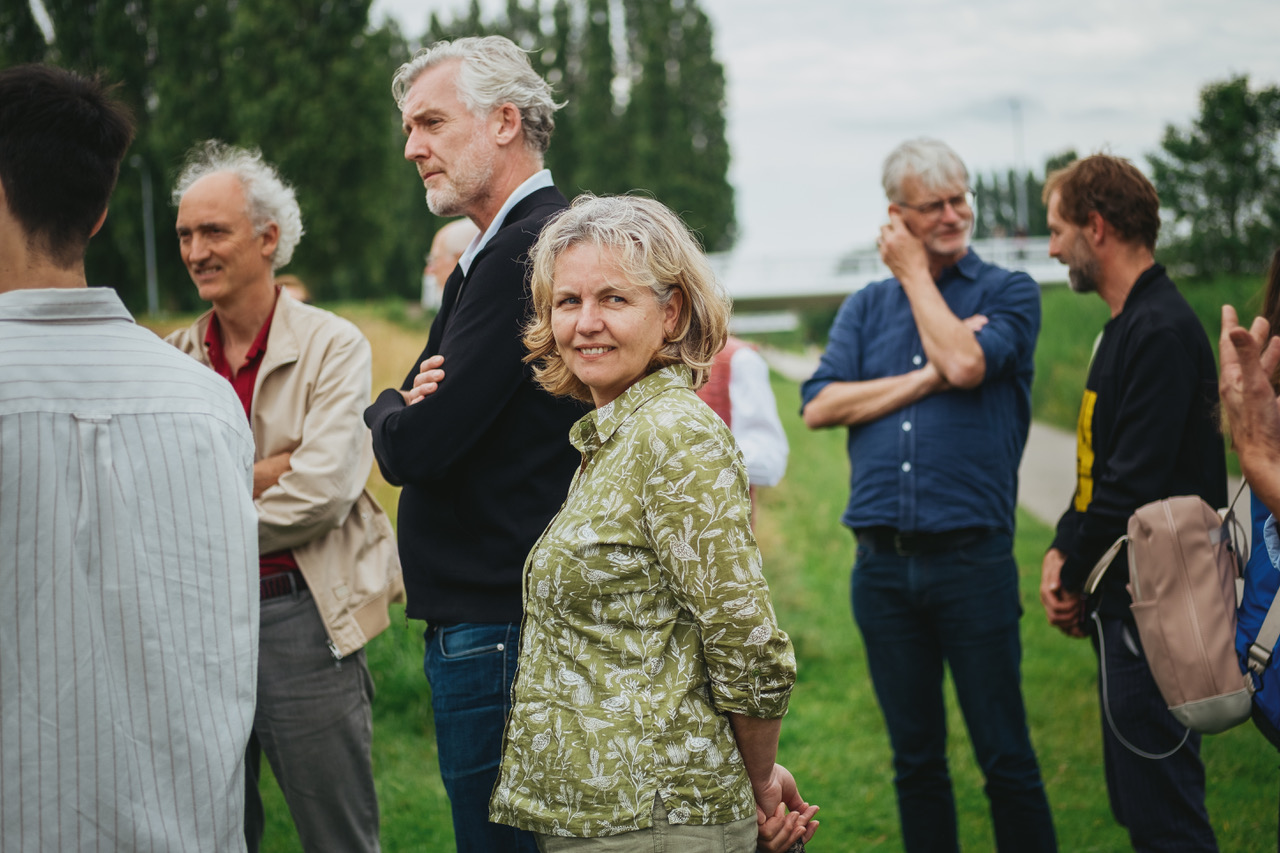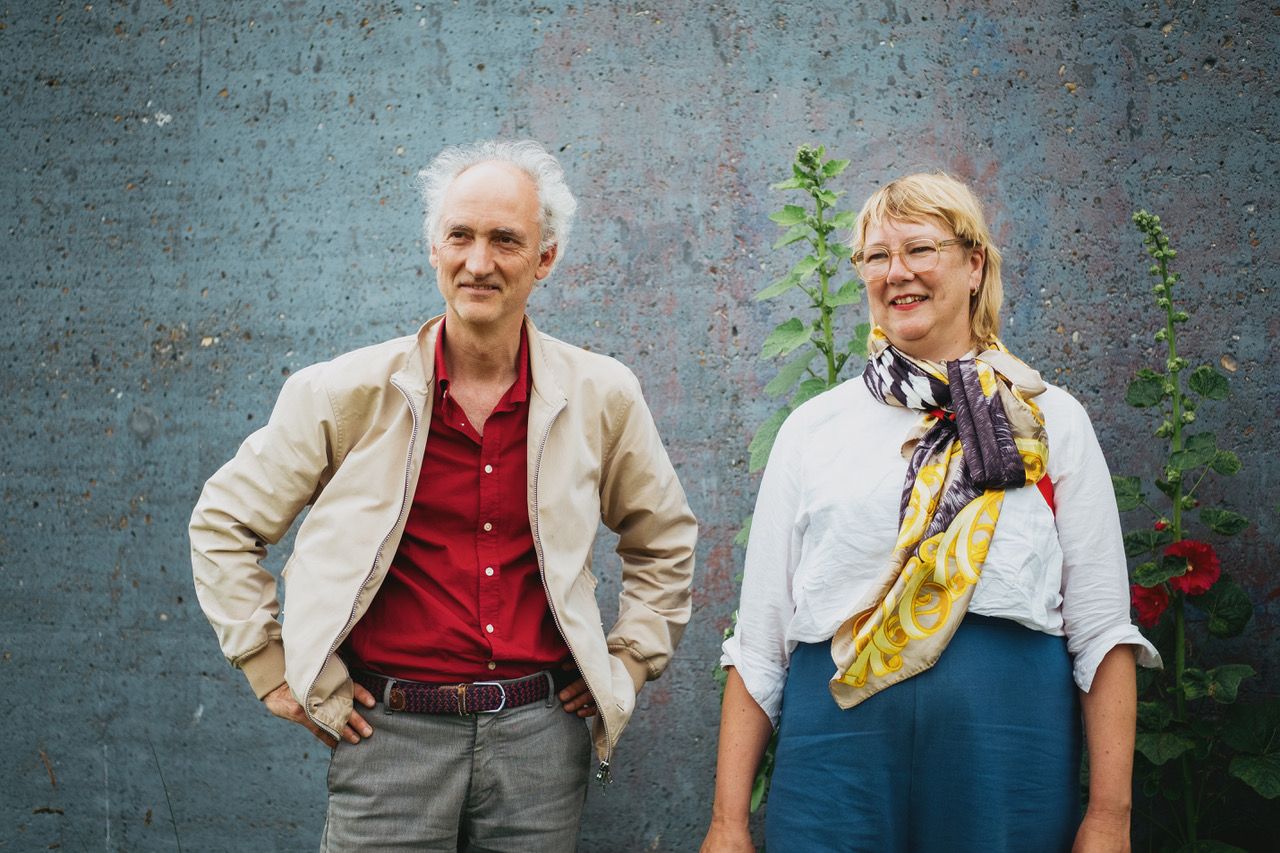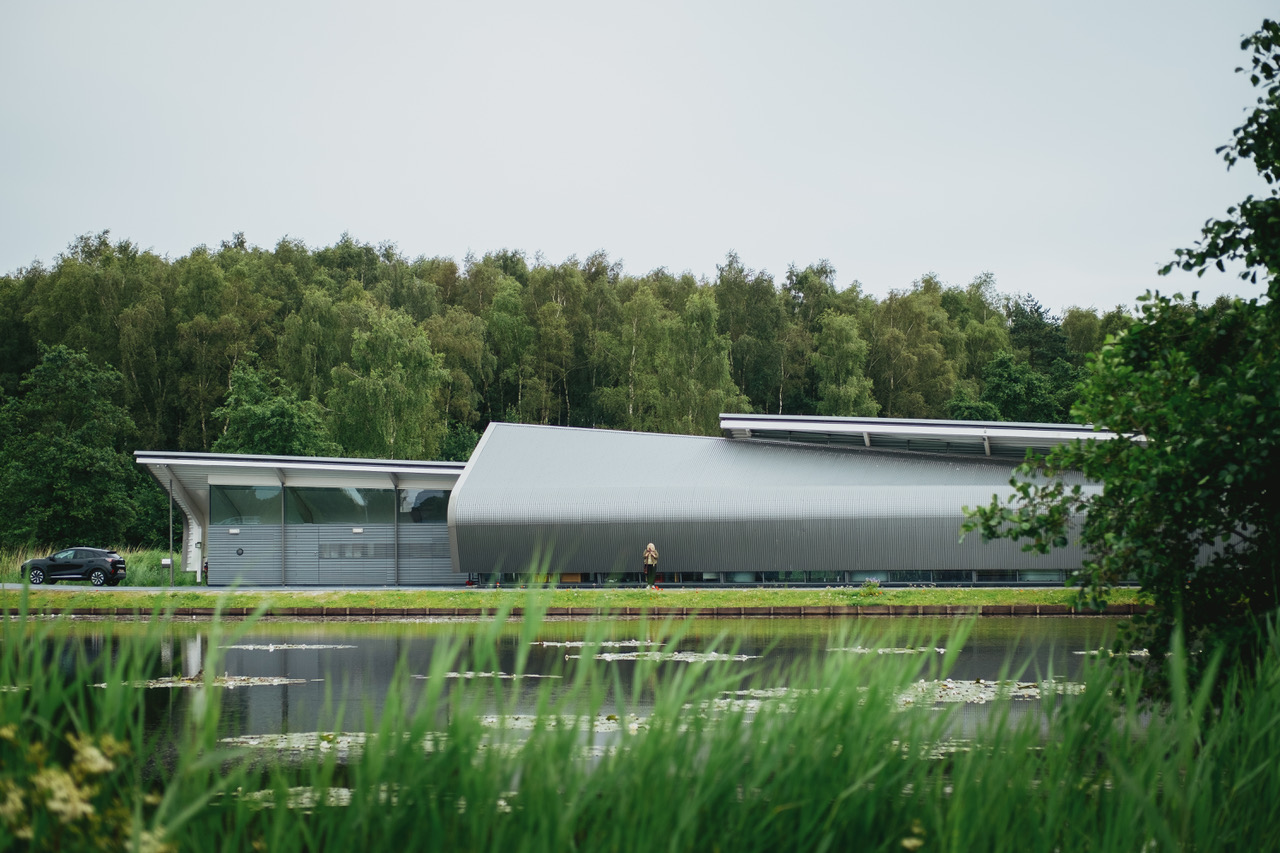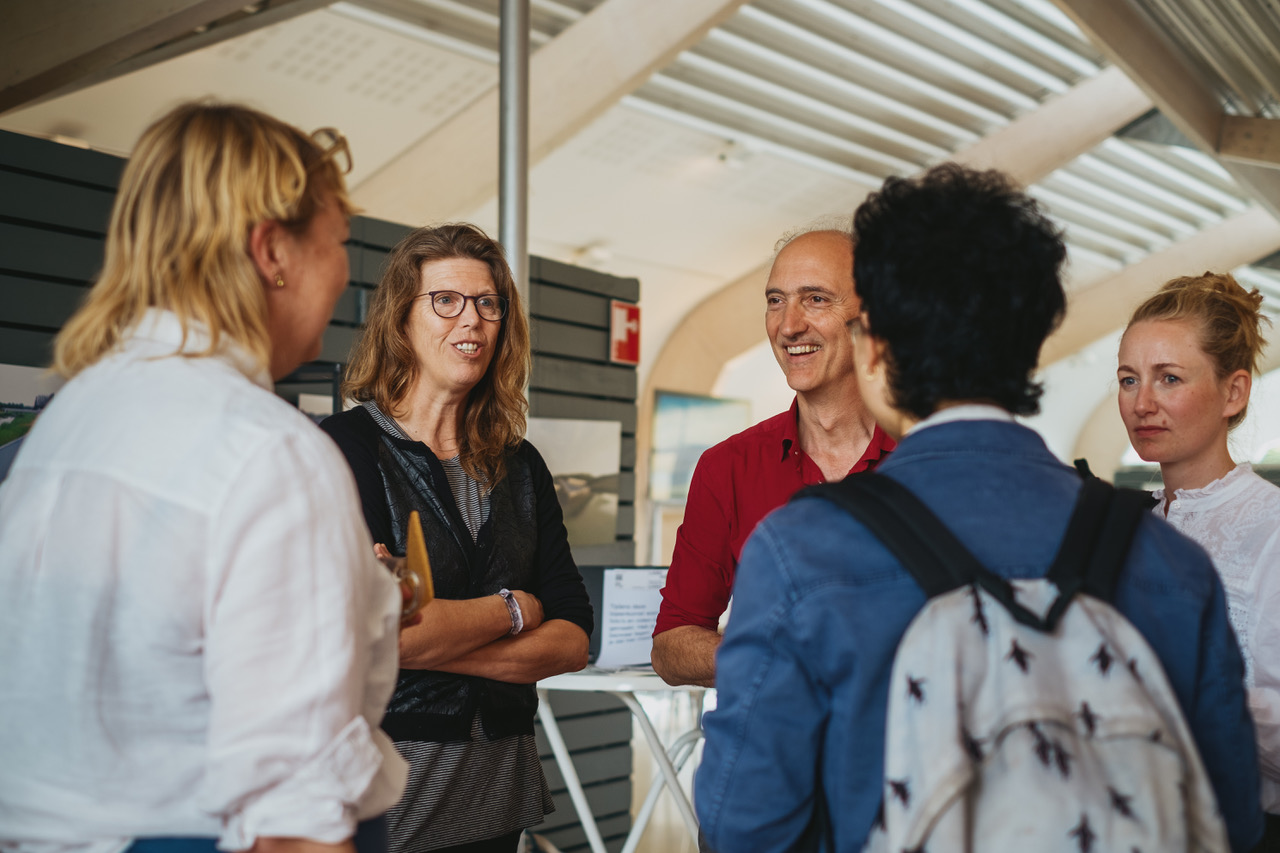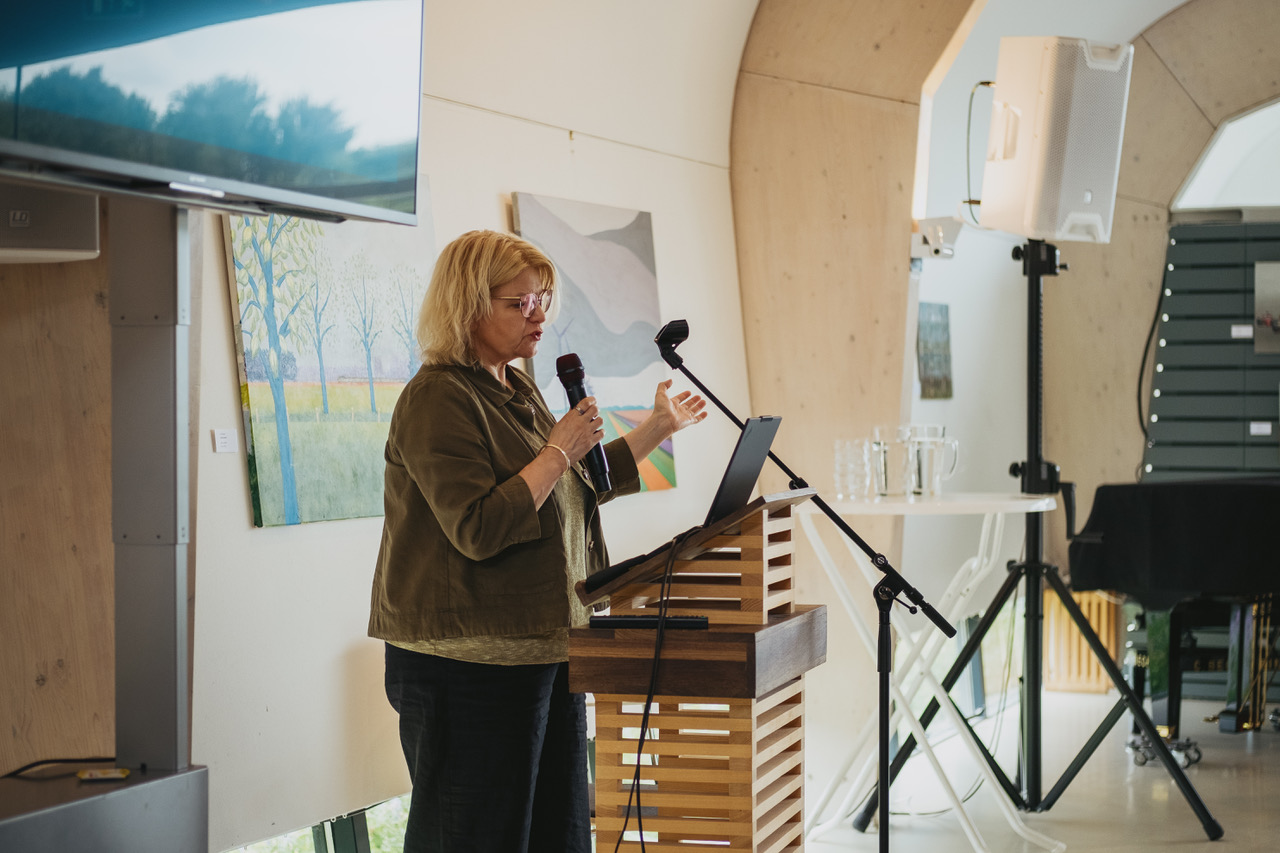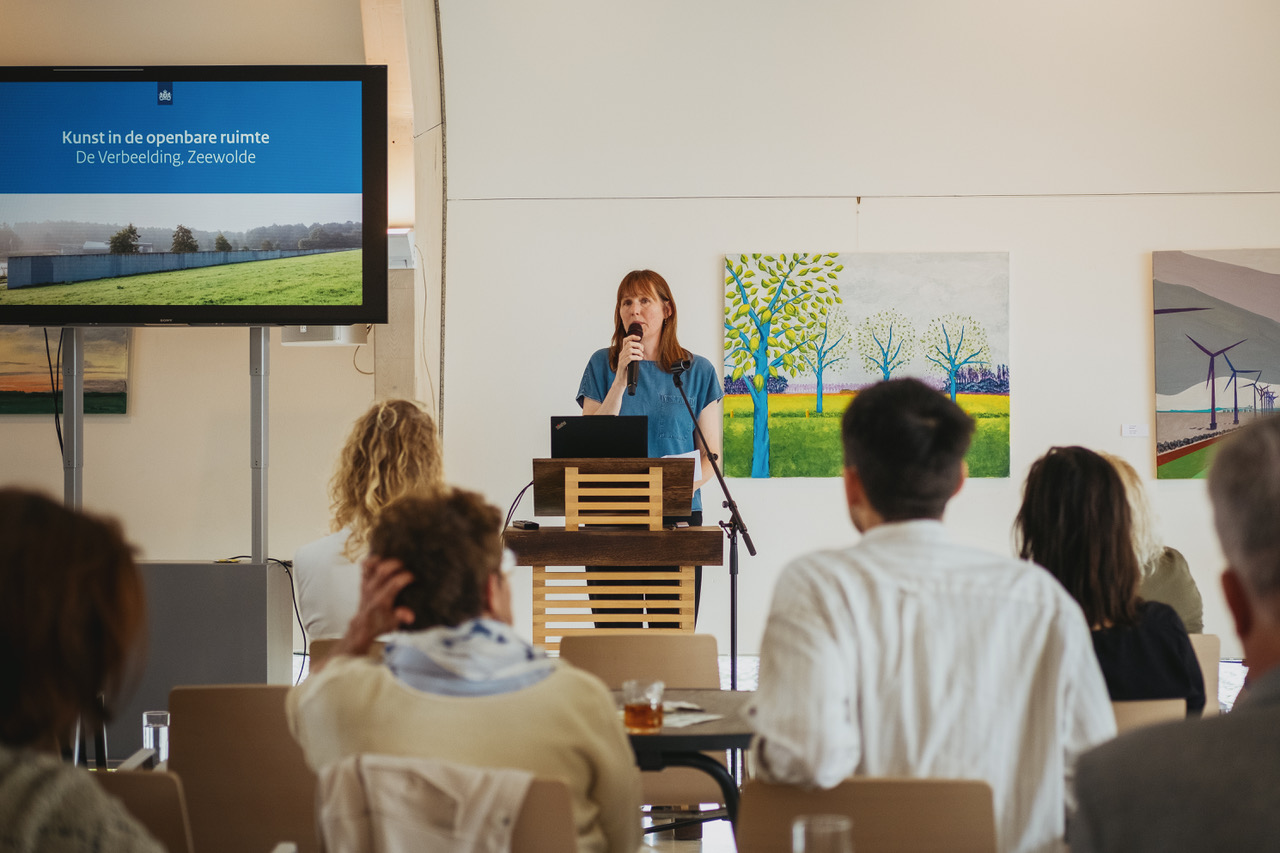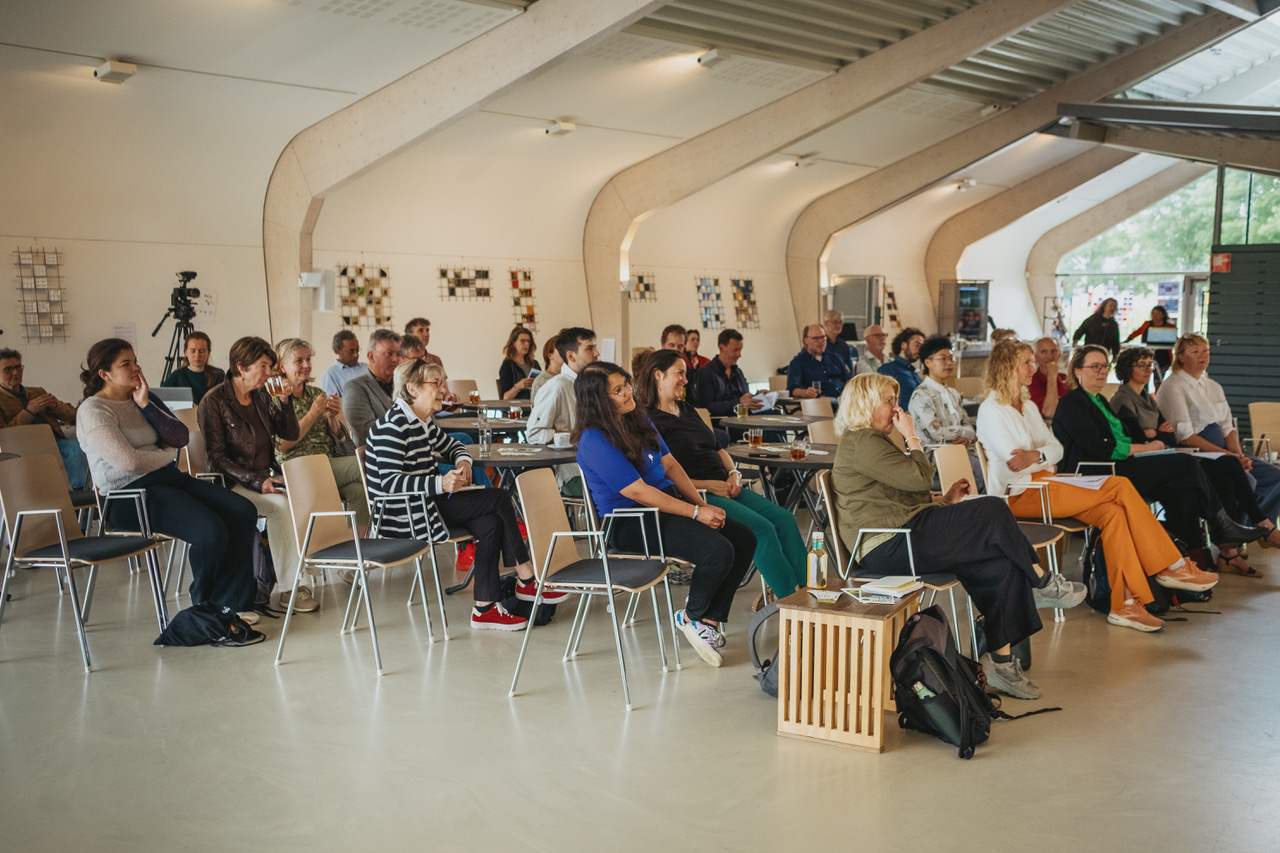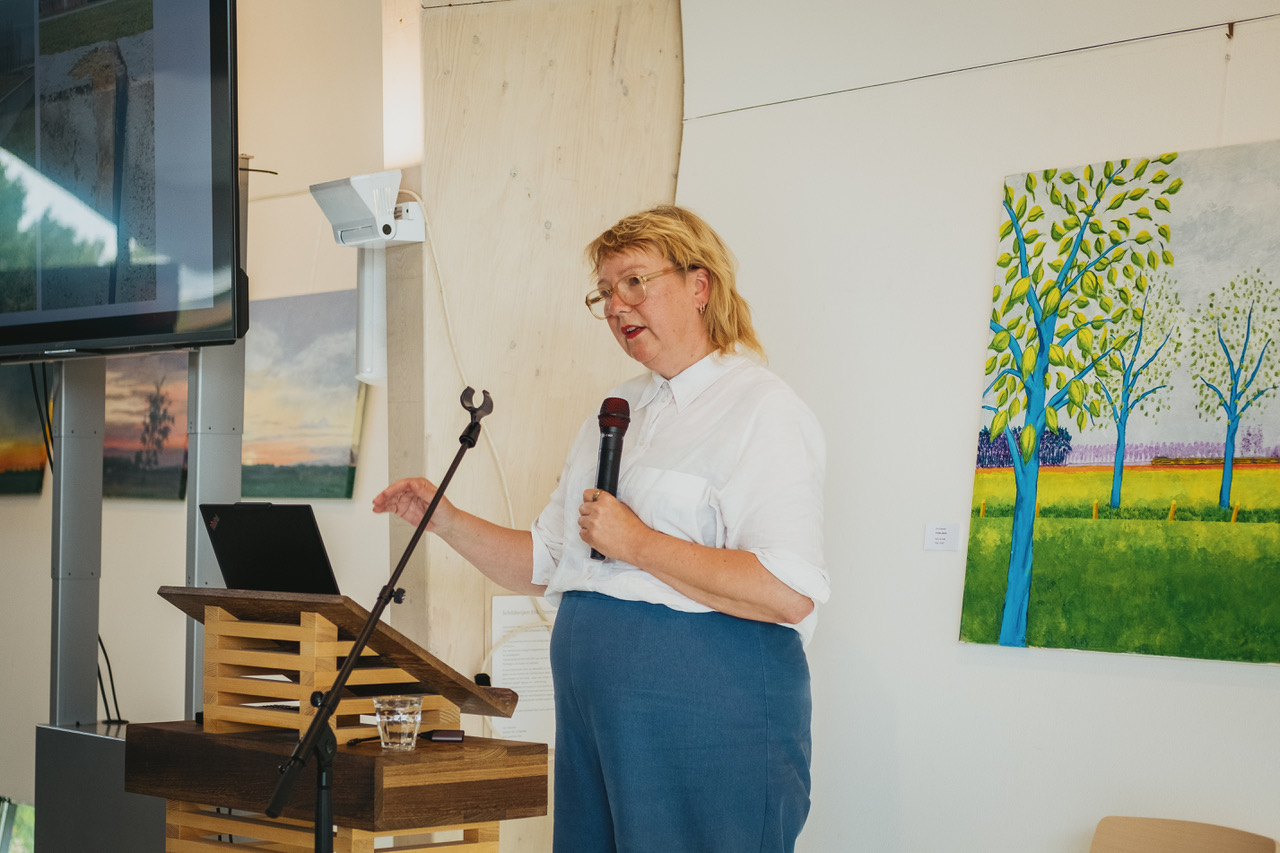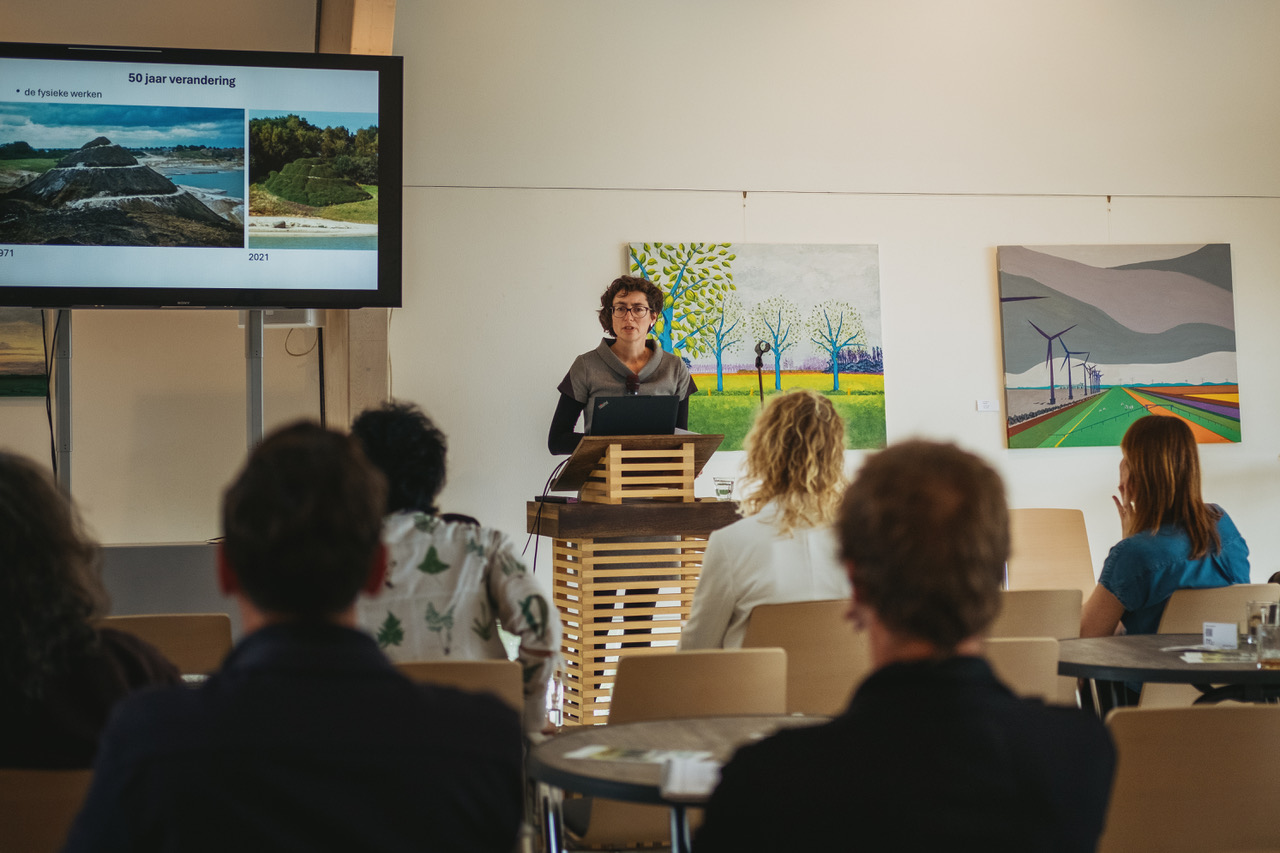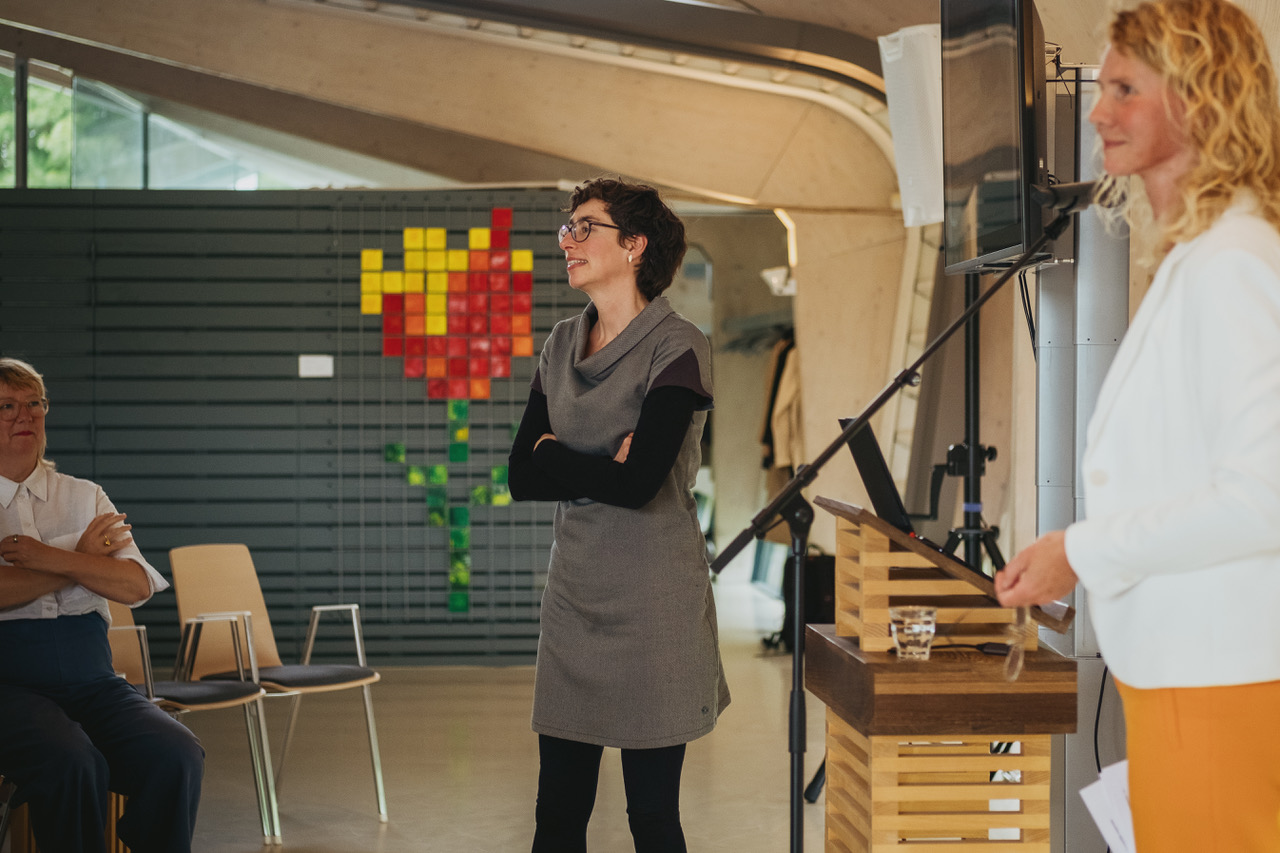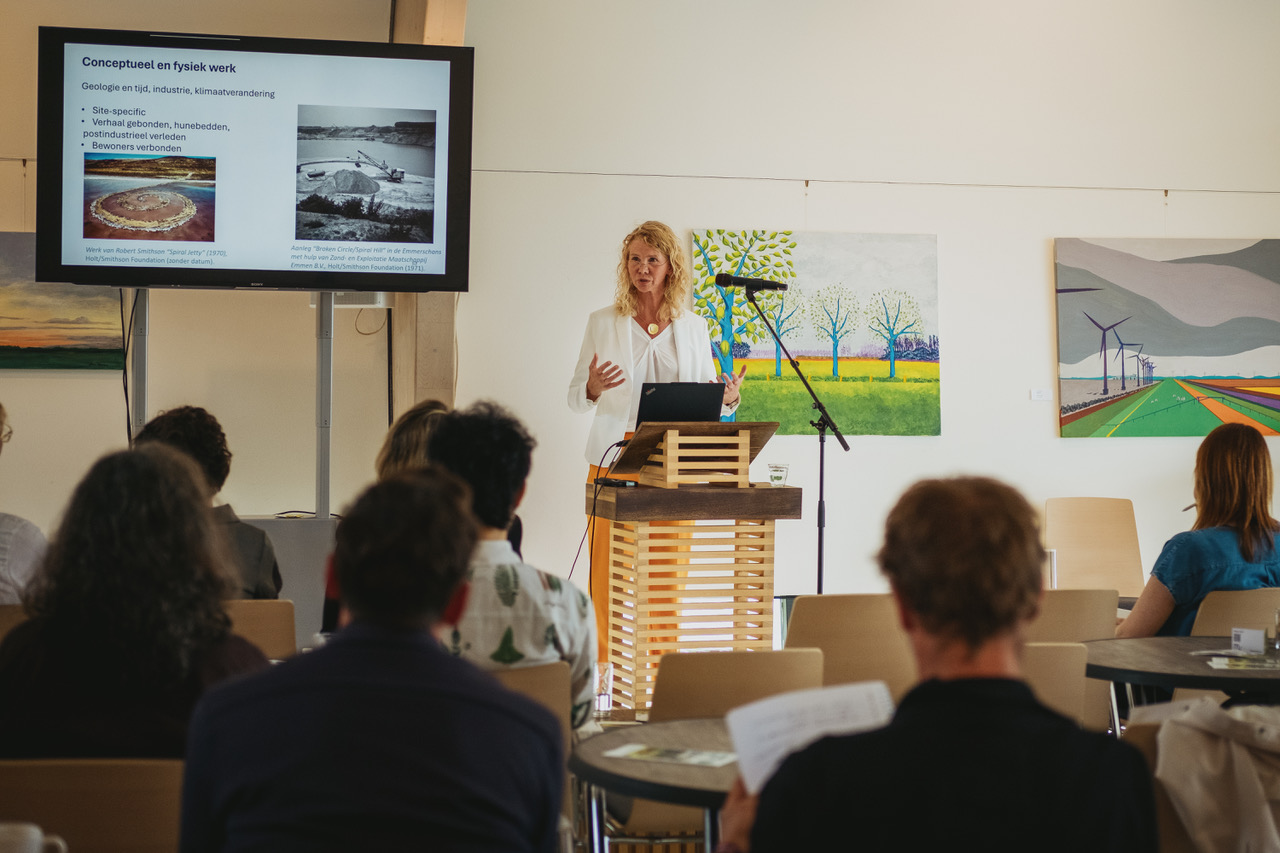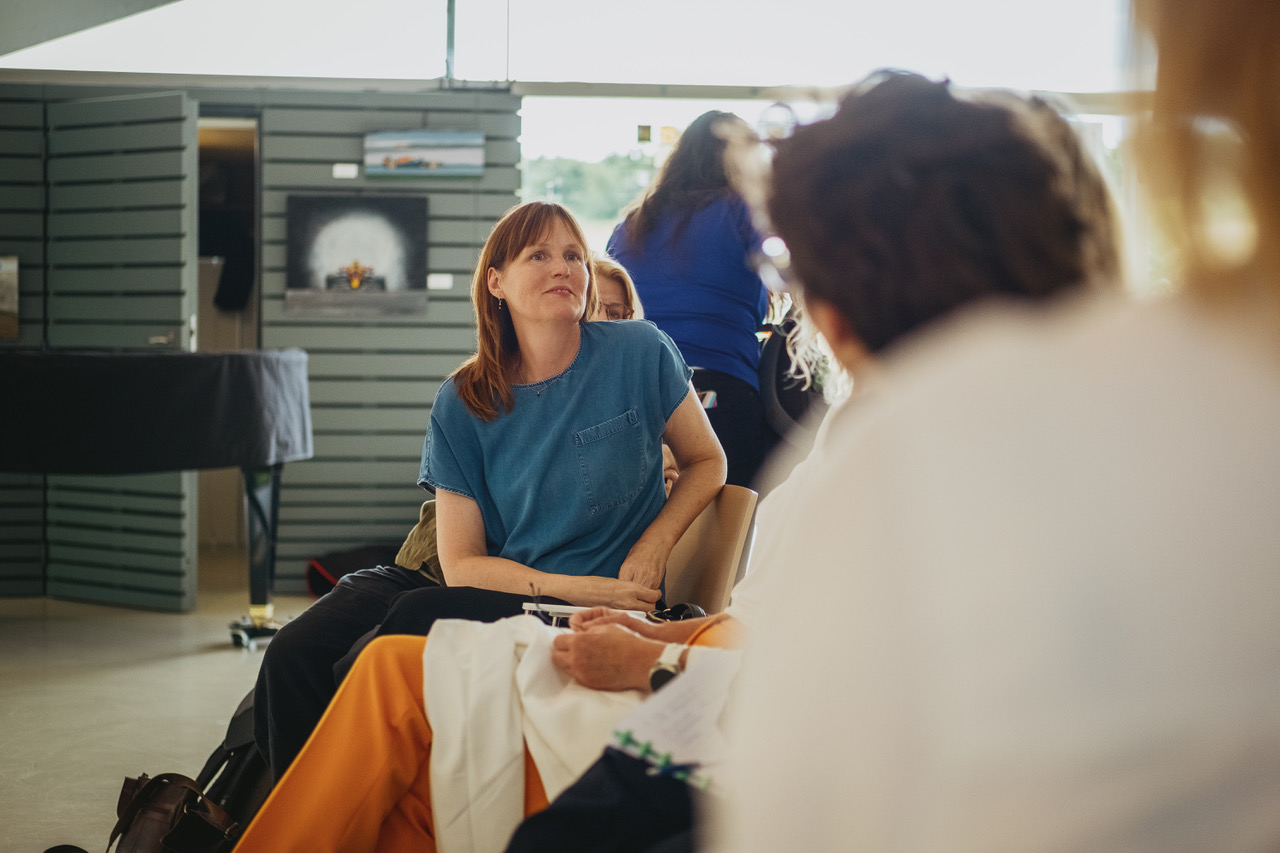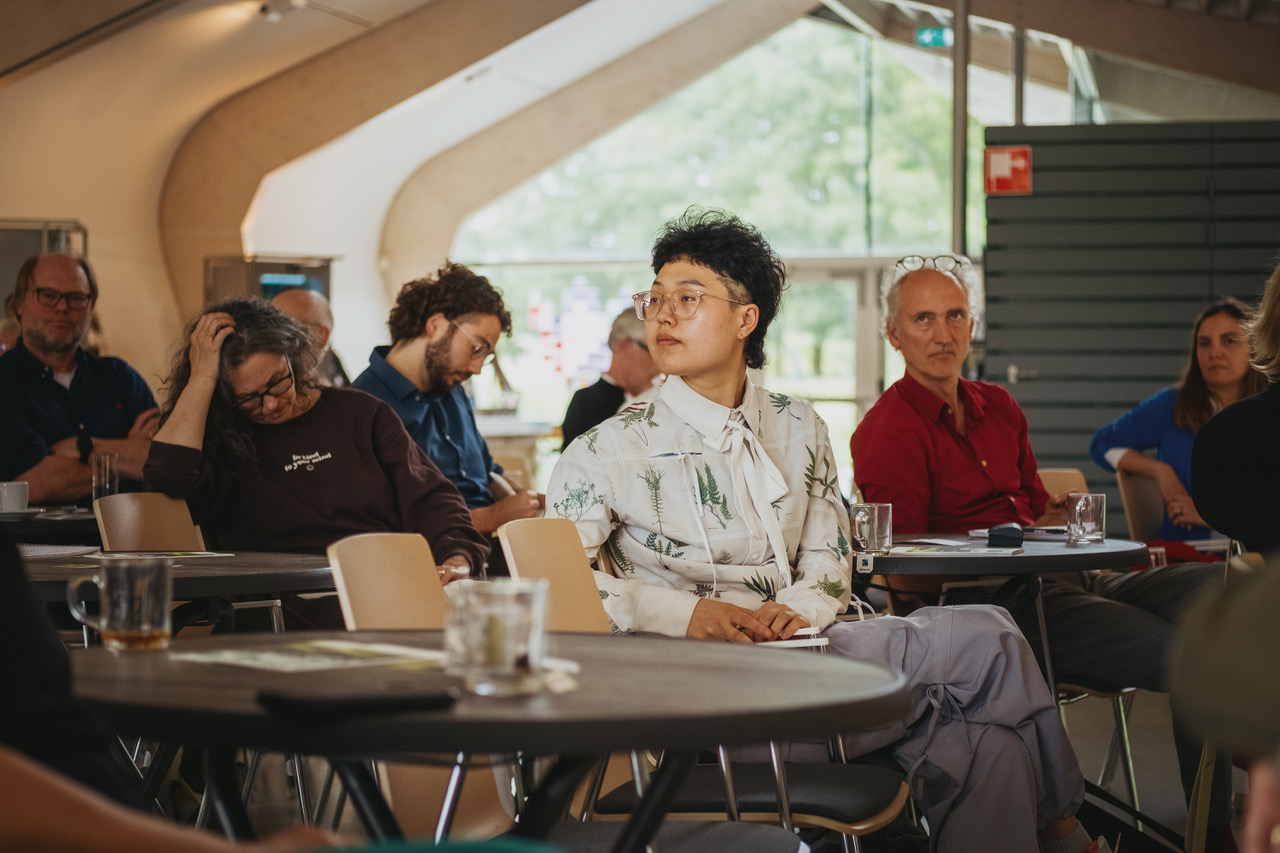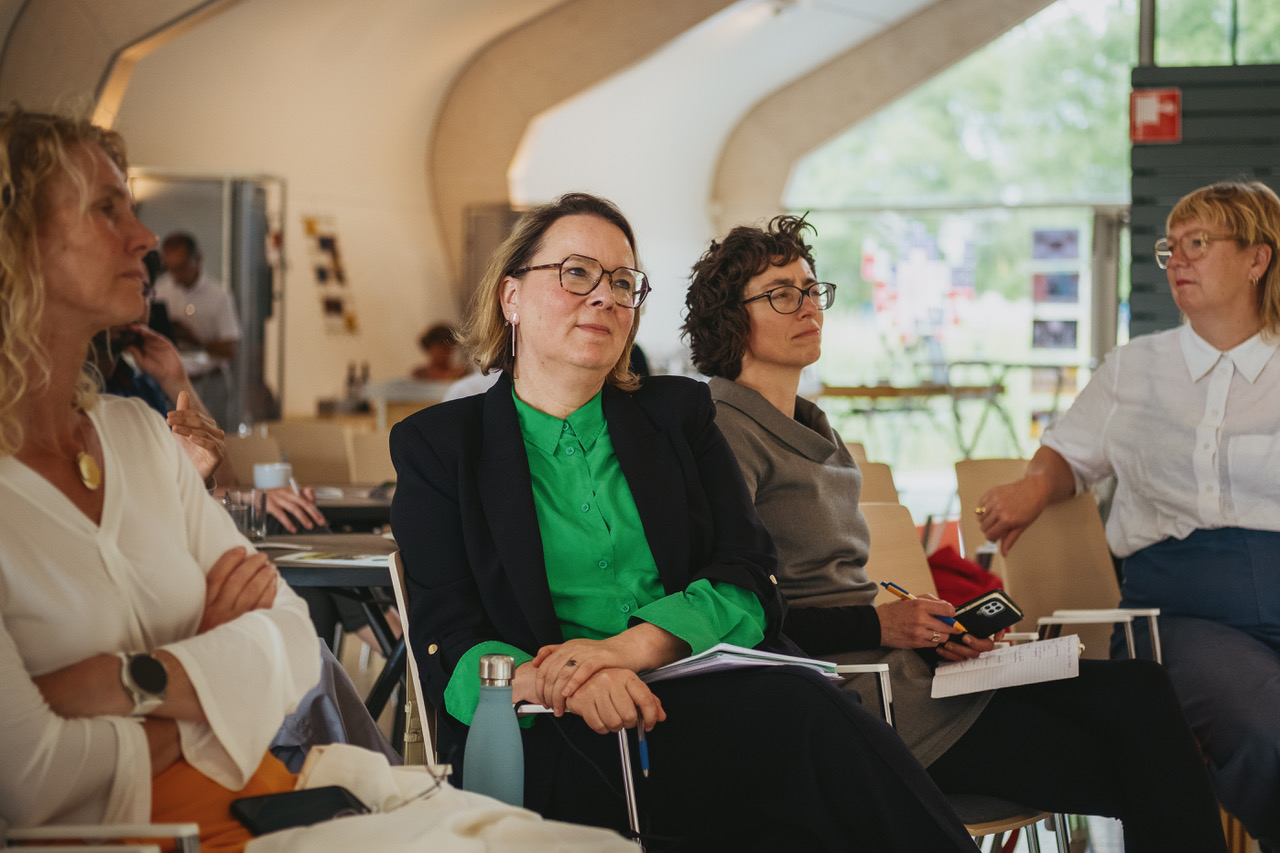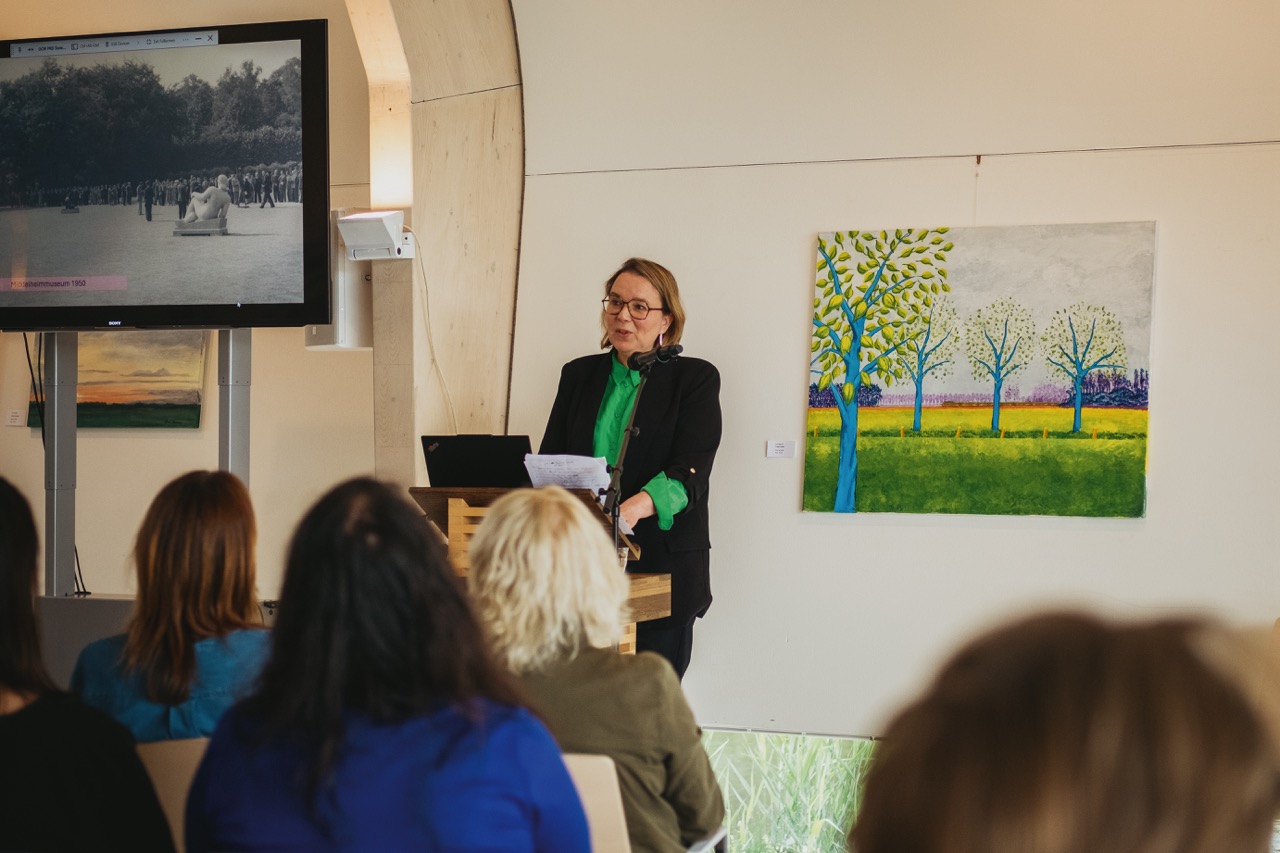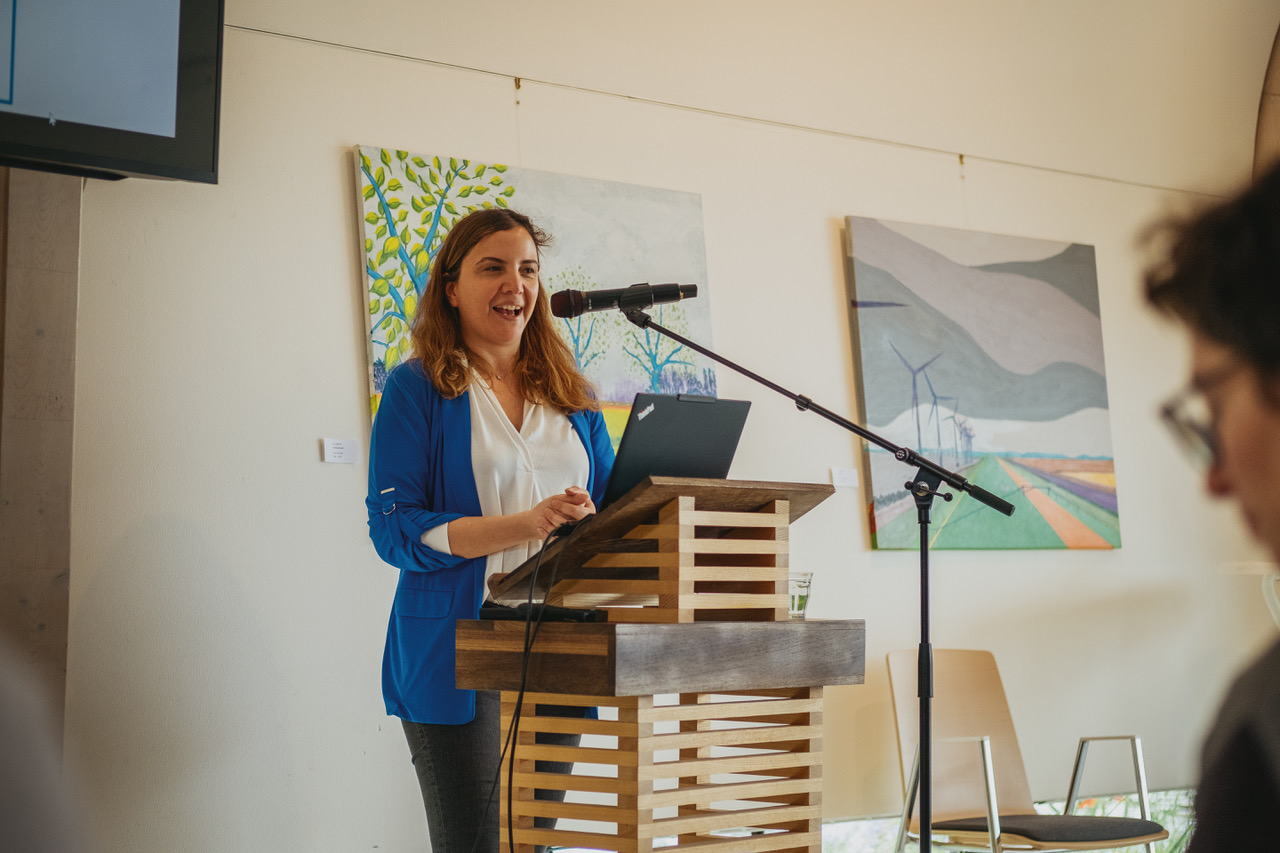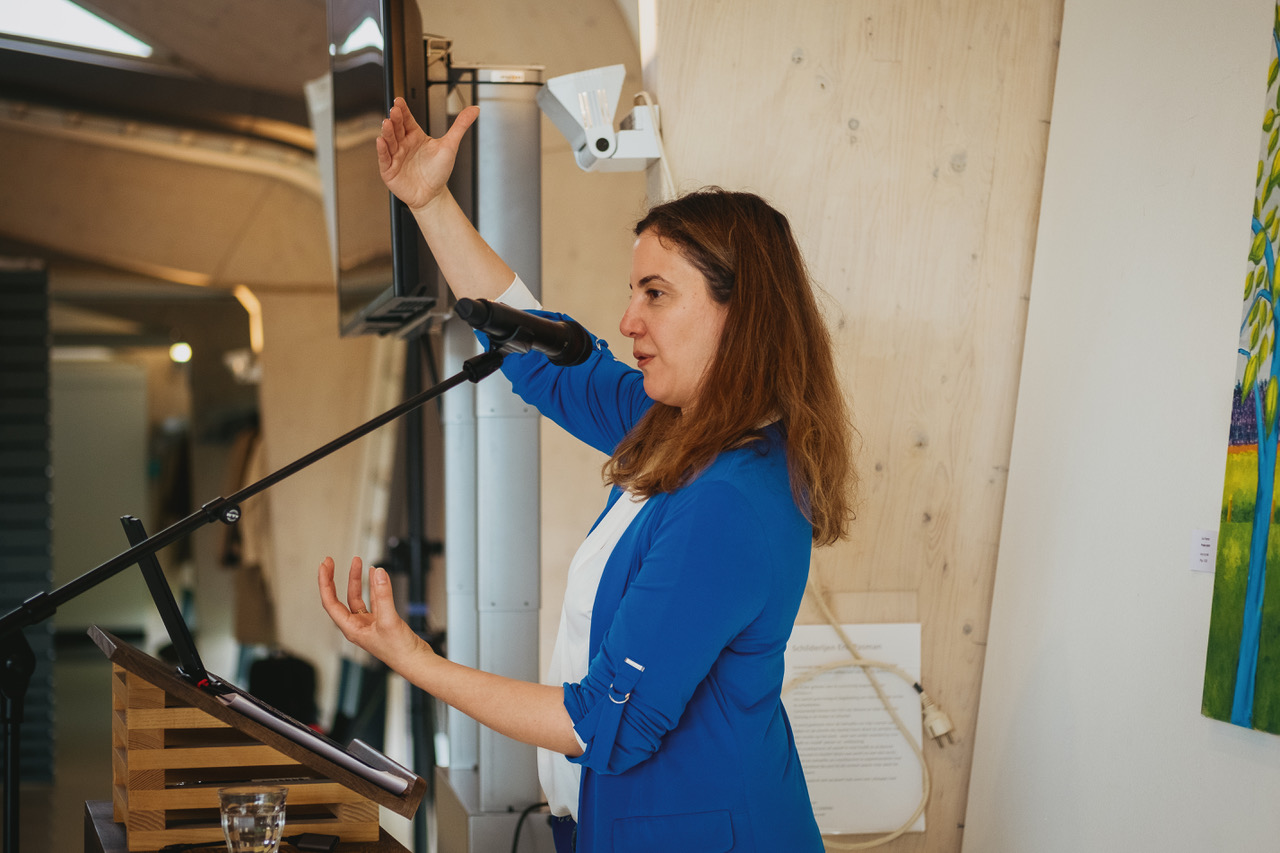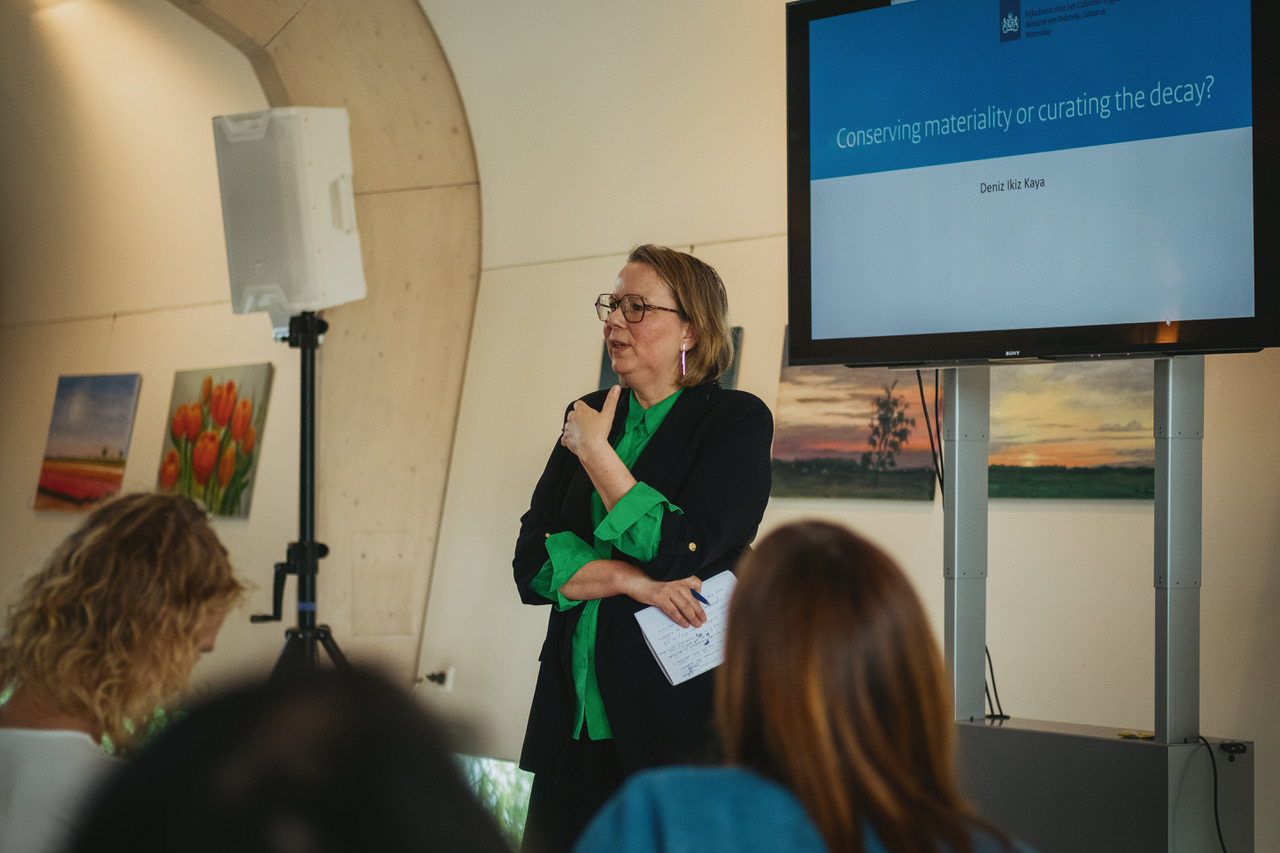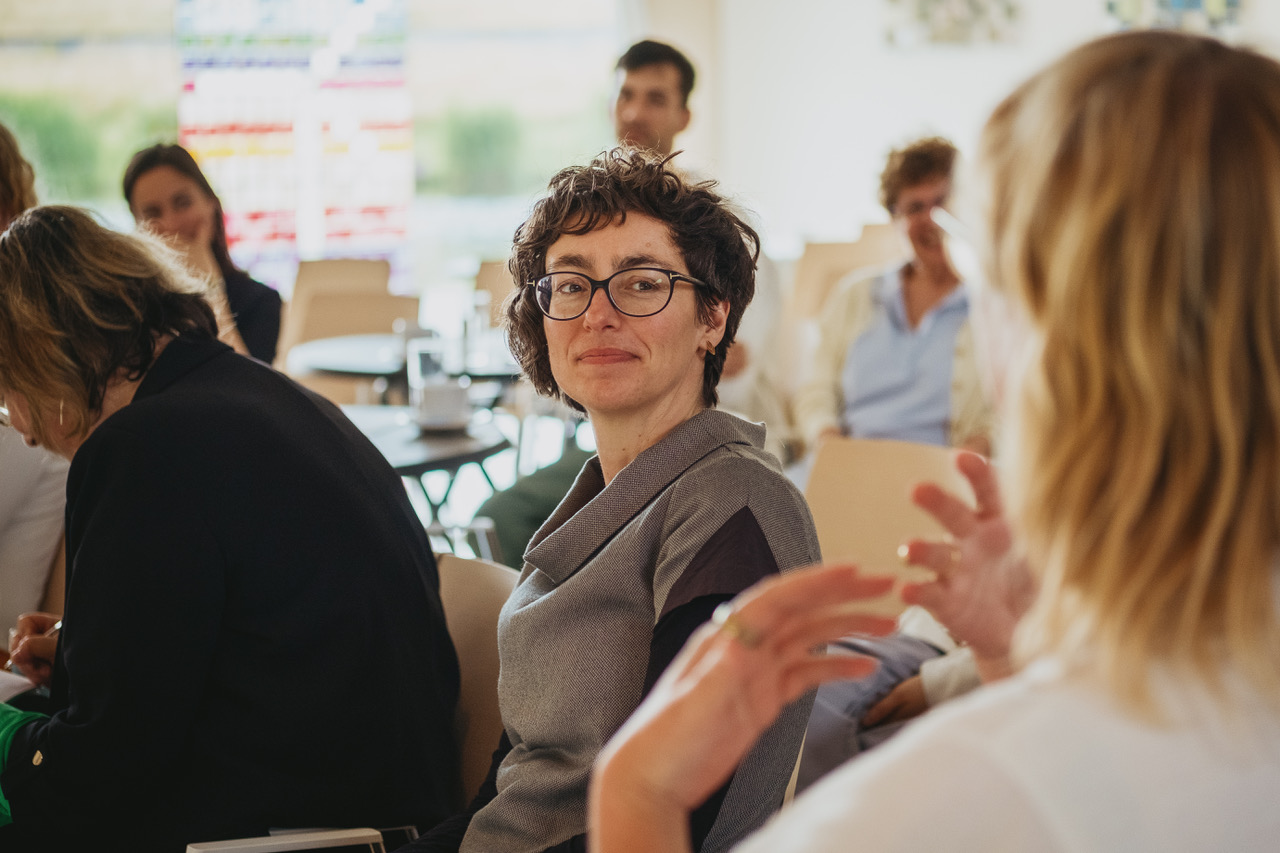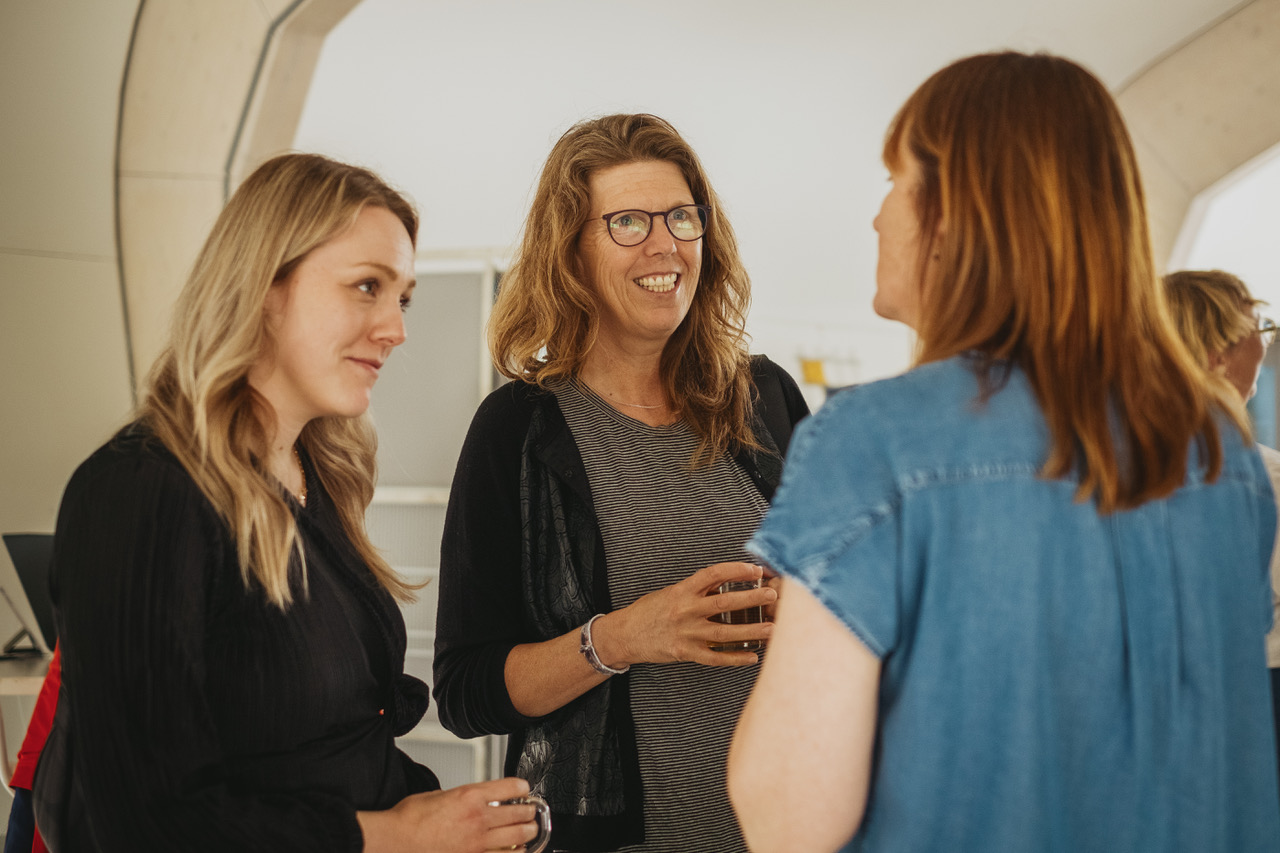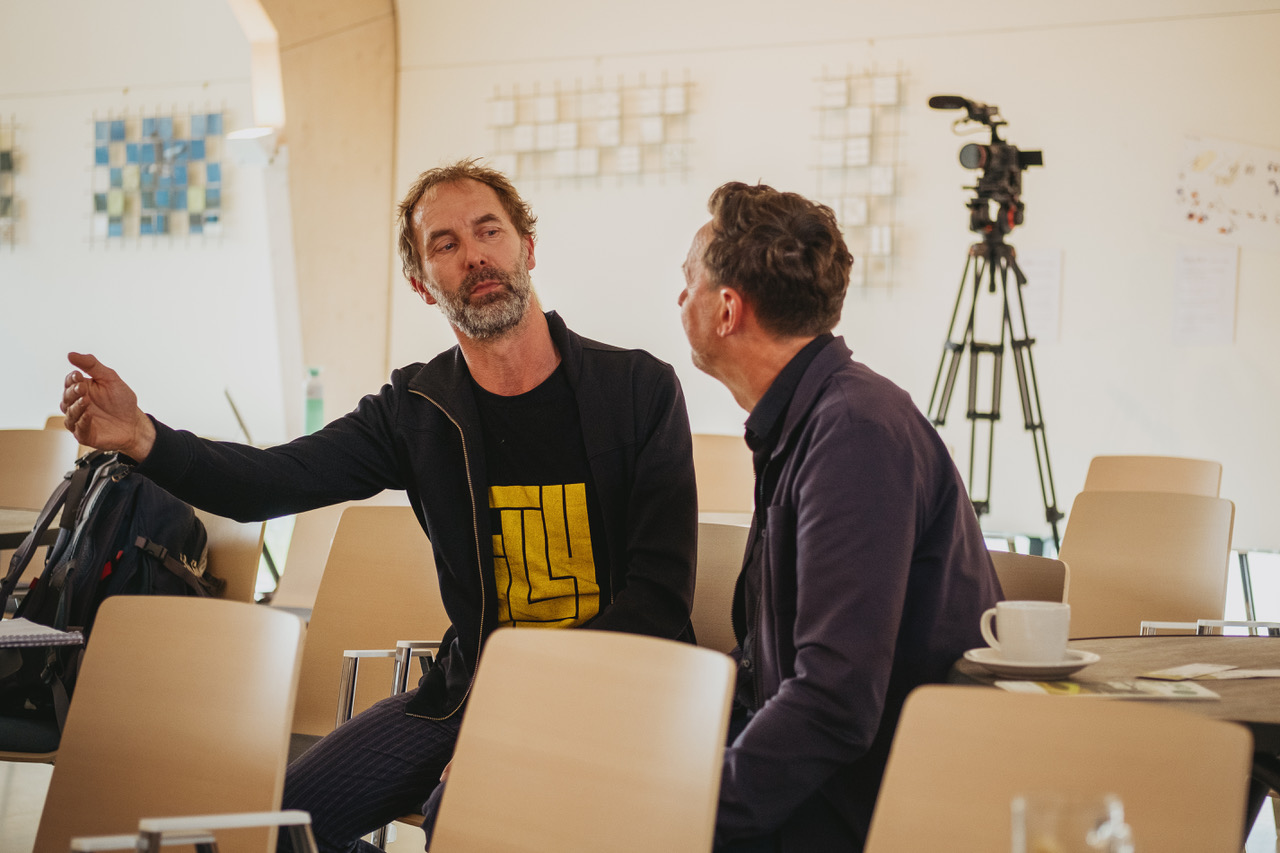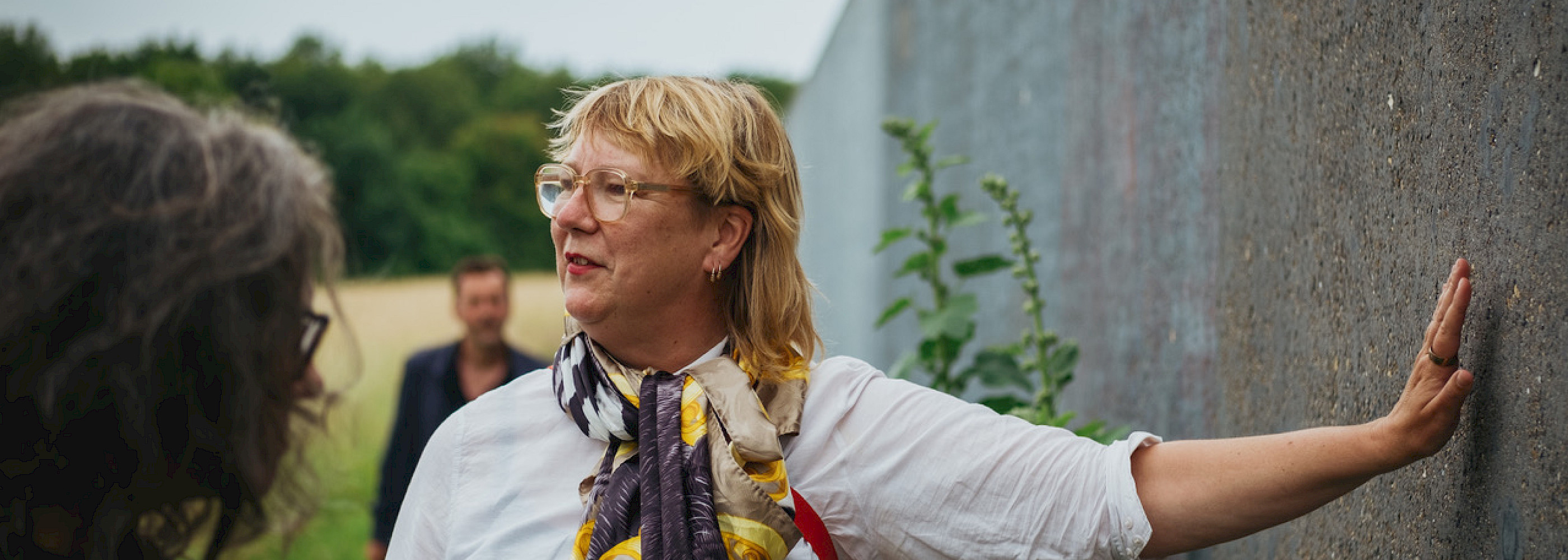
Art in public space viewed through a heritage lens
Report of platform meeting with the RCE on June 20, 2024 in Zeewolde
[This is a short aftermovie of the meeting. All presentations were also recorded in full. Videos of these are listed chronologically in this report].
By Anne van de Dool
The second meeting leading up to the Land Art Lives congress took place on June 20, 2024, at De Verbeelding in Zeewolde. Professionals gathered to examine land art through the lens of cultural heritage. The afternoon was organized in cooperation with the National Cultural Heritage Agency. Participants reflected on various topics, including land artworks in Flevoland and Robert Smithson's 1971 Broken Circle/Spiral Hill in Emmen. These examples demonstrate an intriguing interplay between artwork and environment, which can undergo numerous transformations over time.
Where better to gather to discuss land art than at De Verbeelding in Zeewolde? This glass building overlooks Richard Serra's Sea Level (1996), one of ten land artworks in Flevoland, which has a rich history in terms of conservation and restoration.
Land Art Collection Flevoland, by Martine van Kampen
By way of introduction, Martine van Kampen, curator of this collection on behalf of Land Art Flevoland, takes the audience through the history of these artworks, which dates back to the province's inception. She starts with the very first artwork, Observatorium (1977) by Robert Morris, and continues to the most recent, Riff, PD#18245 (2018) by Bob Gramsma. The collection showcases the wide variety within the genre of land art, ranging from subtle elevations in the landscape to stand-alone sculptures. Some of these artworks have existed for nearly 50 years. Due to their outdoor locations and the use of living materials, these artworks require significant maintenance.
Thanks to funding from the province and various external sources, it was possible to enhance the condition of the works, improve the visitor experience, and boost their popularity. This enabled the thorough restoration of some of the artworks in recent years. Additionally, improvements were made to on-site visitor amenities, including benches and bicycle parking spaces. Efforts were also made to document the works, including creating 3D scans, organizing a traveling scale model exhibition, publishing a province-wide magazine, and conducting a series of artist interviews.
[text continues after video recording of Martine van Kampen's presentation]
Issues with Zeewolde Restoration
Restoring land artworks is not always easy. Take Sea Level, for example. Shortly after its completion, it was discovered that the artwork lacked the proper protective coating against graffiti, among other issues. In 2011, the artwork was painted grey to conceal the graffiti. After several years, it began showing other signs of weathering, with parts of the concrete coming loose. Richard Serra's studio expressed a desire to rebuild the work entirely, with the project expected to start in autumn 2024.
Processes like these raise numerous questions. When should action be taken if a work appears to be changing? Who decides the proper method of restoration? And, in these times of climate crisis, is it responsible to completely rebuild a work? This situation also raises questions among those present at De Verbeelding. What happens to the artwork's residual material? Are residents involved in the restoration? And is it common for an artist to offer to contribute to the costs? Overall, it appears to be a unique situation. The artwork received mixed reactions in Zeewolde at the time. In any case, the remnants of the current artwork will be used sustainably, for example, in the construction of future buildings or roads in the area.
Iconic land artwork in Emmen, by Véronique Hoedemakers
Next, art historian and art consultant Véronique Hoedemakers takes the floor to discuss the land artwork Broken Circle/Spiral Hill (1971) by U.S. artist Robert Smithson. Located at the foot of the Hondsrug in Emmen, the artwork consists of two parts: a semicircle of earth in a lake and a hill beside it with a carved spiral shape. The environment of this earthwork, as Smithson himself called it, has significantly changed in recent decades. Initially part of an active sand excavation site, the land is now set for redevelopment, potentially as a residential or recreational area. Currently, no one is formally maintaining it, so it is experiencing unintended transformations along with its surroundings.
For example, the rising water level is causing part of the circle to become submerged. To make well-considered decisions in the coming years, the province of Drenthe asked Stichting Land Art Contemporary (LAC) to carry out a valuation study of the artwork. For this, LAC approached Véronique Hoedemakers, who formed a team with Lydia Beerkens, director of Stichting Restauratie Atelier Limburg (SRAL), and the Rijksdienst voor het Cultureel Erfgoed (Cultural Heritage Agency of the Netherlands) to conduct the study. In a report spanning more than 100 pages, they stress the importance of this artwork. Smithson, one of the founding fathers of the land art movement, considered Broken Circle/Spiral Hill one of his most significant works. Therefore, the artwork should be preserved and better maintained as an integral part of the development plans for the area.
[Text continues after video recording of presentation by Véronique Hoedemakers and Berthe Jongejan]
Site-specific history, by Berthe Jongejan
Next, landscape architect Berthe Jongejan of the Cultural Heritage Agency elaborates on the work's uniqueness. It is a site-specific piece, which Smithson realized precisely here because of the unique red color of the ground. Broken Circle/Spiral Hill is situated in the middle of a post-industrial landscape, reminiscent of the reconstruction period when a lot of sand was needed as subsoil for new housing estates.
A lot has changed since then. The lake has become much larger, and the color of the water is now significantly less bright. It now resembles a natural lake, with little evidence of its industrial past. Consequently, the character of Smithson's artwork has also changed considerably.
This case also raises questions for the audience. How should we address the expected developments in the area, which are likely to have profound effects on the experience of the artwork? What is the relationship between the artist's intention and the current situation? And how are Smithson's heirs involved? Jongejan argues that a situation like the one in Emmen calls for a knowledge institute, where dialogue on the development and conservation of land art can take place. In this way, even a work of art like Broken Circle/Spiral Hill can be preserved for the future.
One artwork, several variants by Veerle Meul
After the break, during which there is time to visit the nearby Sea Level, Veerle Meul, head of collections at Antwerp's Middelheim Museum, takes the floor. At this museum, the building and the surrounding garden form an organic whole, featuring works by international artists, including Ai Wei Wei and Luciano Fabro, among others.
Preserving such works sometimes requires drastic choices, as demonstrated by Meul's case study centered on the work meditatieve ruimte het zelf zijn (1974) by Jan Dries: a slightly tilted ten-meter by ten-meter lawn that subtly confounds the viewer. It is regarded by many as Belgium's first land artwork.
The work did not retain its original form for long: soon the points of the tilted area blended with the surrounding terrain. As a result, Dries created a new variant, which Meul refers to as a 'translation'—a Carrara marble model retaining the same shape. This attracted the attention of the Antwerp mayor, who had an enlarged version measuring 36 by 36 meters built on the Theaterplein. However, the function of this space had not been taken into account: the height differences in the work hindered the weekly markets, and residents were not impressed either. In the end, it was decided to demolish it. Yet that did not prove to be the end of the artwork: a few years ago; it was recreated in the garden of the Middelheim Museum.
Again, questions arose about maintenance: Can the artwork be walked on by the public? What should be done about rodents nesting in the artwork? And how can the parks department be instructed to avoid damaging the work? Meul's account effectively reflects the issues faced by everyone involved in installing and maintaining a land artwork and how perspectives on this have changed over the years.
[Text continues after video recording of presentation by Veerle Meul]
Land art and Climate, door Deniz Ikiz Kaya
Finally, Deniz Ikiz Kaya, assistant professor at TU Eindhoven, takes the floor. She reflects on climate as a crucial factor to consider in the maintenance of land art. Rising water levels and extreme drought are affecting an increasing number of works, putting them at risk of flooding or altering their appearance due to yellowing grass.
Often, land artworks themselves have a significant environmental footprint: the construction of land art often causes considerable CO2 emissions, partly due to the production of materials and the extensive transportation involved. Providing insight into this can raise public awareness of what it takes to create a land artwork. Some land artworks in Flevoland already convey a climate-related message, such as Exposure (2010) by Antony Gormley, which considers rising water levels. There are several ways to address these changes, Ikiz Kaya emphasizes: from trying to preserve the original work as much as possible to 'curating the decay' of the artwork.
Managers make different choices in this process, partly depending on the artist's wishes. Documentation also plays a crucial role, from 3D measurements, such as those commissioned by Land Art Flevoland, to art films like the one Smithson made about Broken Circle/Spiral Hill. In this way, these land artworks, in their various forms, can at least stand the test of time.
